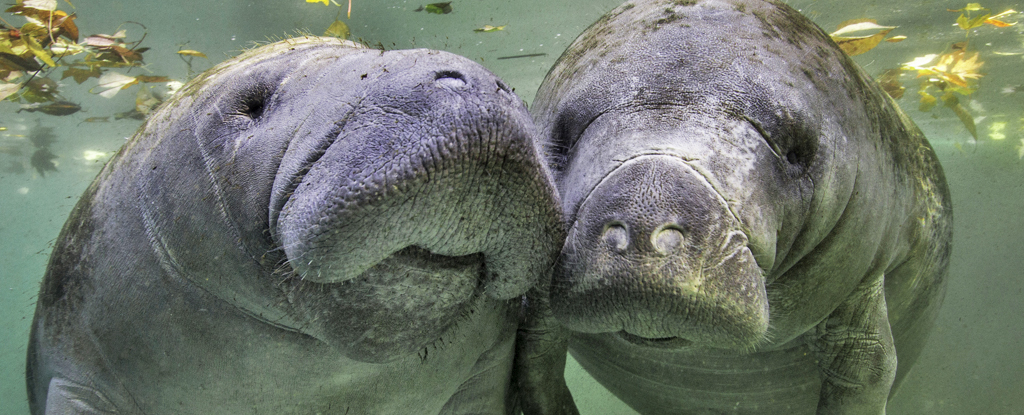Products You May Like
Aquatic adaptations in mammals may be irreversible, according to a new study investigating the means by which more than 5,000 species transitioned from land to water.
Although the evolutionary journey of animals like whales and seals can ultimately be traced back to marine tetrapods that left the ocean for a life on land, roaming terra firma again isn’t on the cards for the descendants of those that have become mostly or fully aquatic.
By comparing body mass, diet, and genomes of 5,635 existing and recently extinct mammals, University of Fribourg evolutionary biologist Bruna Farina and colleagues tracked the evolution of aquatic adaptations. These include changes in size, locomotion, sensory systems, reproduction, diets, and lung capacity.
Out of all those species 97 percent remain fully terrestrial mammals. Only 3 percent transitioned to a life living in water again, all to different extents.
This transition happened independently in different mammalian groups, with some taking their commitment to the water further than others. This gave rise to three distinct groups: semi-aquatic animals like platypus, water shrews (Neomys fodiens) and water opossum (Chironectes minimus); those that use land from time to time, like seals and otters; and fully aquatic mammals like dolphins and dugongs.
While previous semi-aquatic species have returned to being fully terrestrial, adaptations for an aquatic existence become irreversible on the spectrum between semi- and mostly-aquatic dwellers, the team found.
As a species become more aquatic their body mass tends to grow, with 5 percent increase per million years for those that are semi-aquatic and up to 12 percent increase per million years for the fully aquatic species. This is true even for smaller mammals like rodents.
This makes sense in terms of Bergmann’s ecogeographical rule: larger species tend to be found in environments that quickly sap body heat, as in water, as minimizing the ratio of surface area to volume increases heat conservation.
Land animals are also constrained by the challenge of transporting their mass, something that is easier in water thanks to buoyancy. What’s more, a greater quantity of prey is available to sustain larger carnivores in the ocean, which dolphins and whales tapped into by evolving systems of filter and lunge feeding.
Despite the abundance of sea grasses and algal beds, most watery transitions – with the exception of sea cows – haven’t made use of them as a food source. Mammals that made it back into the water have tended towards carnivory.
This is “likely because enzymes needed to break down plant or algal material require higher temperatures,” note the researchers.
Most sea cow species like dugongs and manatees stick to warm waters. The only cold-water mammalian herbivore was the Steller’s sea cow (Hydrodamalis gigas), which we drove to extinction. It was ten times heavier than the remaining species.
Life in the water also demands a different, more streamlined locomotion system, which leads to limb reduction and eventually the inability to carry a body about on land. Limb reduction in whales and dolphins is related to loss of expression of multiple regulatory genes.
Losing a trait as complex as legs, shaped by millions of years of selective pressures and chance emergence of various mutations, isn’t a process that can be easily reversed.
“Dollo’s Law postulates that once a complex trait is lost, it cannot be regained,” the researchers write in their paper, noting the same is seen in birds that lose their ability to fly.
This isn’t to say similar anatomical structures and functions can’t ever evolve again in the future. But as complexity of a feature increases, its evolutionary heritage is far less likely to repeat as critical genes are changed and lost.
“After that transition,” Fribourg and team continue, “competition with incumbent terrestrial carnivores, which can use their limbs for hunting more effectively on land and manipulate their preys, may have prevented any possibility for a reversal.”
Awkward bumbling from any dolphins keen on mounting an invasion onto shore would be thwarted all too easily, in other words, by far more nimble predators.
This research was published in the Proceedings of the Royal Society B: Biological Sciences.
